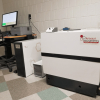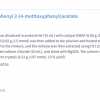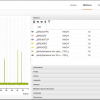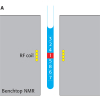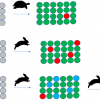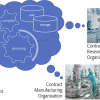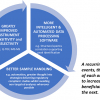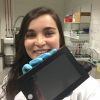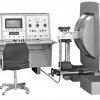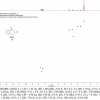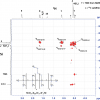Articles
Tony and Mohan Cashyap interview John Hollerton, who has just retired after a career of over 40 years at GSK (and its many previous names). John has been responsible for many aspects of analytical chemistry at GSK. As Tony says, he is “an innovative ideas man with some interesting stories”.
Tony Davies has started a timeline of significant spectroscopic system developments aligned with Queen Elizabeth’s reign as recently celebrated in her Platinum Jubilee. Jumping from Princess Anne the Princess Royal’s birth to Heinrich Kaiser certainly makes for a novel approach! Tony hopes that we can turn this into an online resource with your help.
This column starts to answer the question, “how does one actually find FAIR data?” with a detailed example from Imperial College London.
Tony Davies and Luc Patiny introduce us to free online NMR data processing tool in “NMRium browser-based nuclear magnetic resonance data processing”. They run through the background to the project, how it works and how you can try it yourself. There is a video introduction and an online demo page where you can play with different scenarios.
Following our articles on the FAIR initiative, we now look at some examples of the FAIRification of data handling, collection and archiving.
This article describes a clever adaptation to benchtop NMR experiments that allows the collection of multiple scans (to produce high signal-to-noise ratios) without the time penalties involved.
How did a major trade show organiser cope with the disruption of COVID-19? Susanne Grödl, Exhibition Director of analytica for Messe München, gives her experience.
Whilst automation is not a panacea, it can improve the accuracy of manual tasks as well as freeing up our time for more challenging tasks. The authors explore some particular examples they have come across and lessons learned from them.
Tony Davies and Mohan Cashyap discuss this topic with help from a number of industry experts. Whilst there are undoubted computing and networking issues for regulated industries in allowing working from home as if the user was in the lab, they are not insurmountable.
With a significant proportion of our regular readership probably under home lock-down, we were wondering if we could help you at this difficult time by pointing out some useful online resources. So, when we finally come out of this pandemic, you could do so better skilled and more up-to-date than when we went in to it.
Tony and Lutgarde Buydens give us an update on the planning for the major EuroAnalysis 2021 conference, which is being held in Nijmegen, the Netherlands, at the end of August 2021. At this stage, they are keen to gather suggestions from readers on topics they would like to see covered. Groups are also invited to consider hosting their own event under the EuroAnalysis 2021 banner.
Rechargeable lithium ion batteries (LIBs) have a significant role in modern society: from portable electronic devices to electric cars and bicycles. Indeed, I would be surprised if anyone reading this does not have a LIB on or near them now. Both NMR and EPR spectroscopies and their imaging modalities can provide useful information, which will prove important in battery research and the development of ever improving batteries.
A recent conference on Extractables and Leachables in Hamburg not only allowed two ex-colleagues to meet after many years, but also provided information on developments and trends in the regulatory environment. Not only are ever lower levels of detection required, but also analytical requirements are being placed on companies further back in the materials’ supply chain that have not had to make such considerations before.
Tony Davies and Roy Goodacre raise some issues around the reliance just on vast quantities of data collection in omics experiments. As they put it, should we “just keep throwing the mass spectra, nuclear magnetic resonance data sets and our ion mobility fingerprints onto a big pile for the statisticians to fight over?”.
An interesting insight into, well, a week in the life of the author as a fourth-year PhD student. Katie is working on investigating a way of detecting liver damage using spectroscopy, which is “about as interdisciplinary as you can get”! I’m sure all readers will find it interesting and it may be helpful for those you know who may be considering a PhD.
Clemens Anklin gives a short history of the commercial and technical development of NMR. From the first measurement of nuclear spin in 1937 by Rabi and his 1943 Nobel Prize to recent developments in small NMR spectrometers and instrument company changes.
Tony Davies continues his quest to find out what you all need to work more efficiently. You will remember that in the last issue, Tony introduced his survey to discover what developments were needed in spectroscopy by readers. Some of the initial responses are explored, and Tony finds that he has opened a “can of worms”.
Tony Davies and a number of others consider collecting supplementary spectroscopic data. Like Eurospec, the plan is to use such supplementary data not only to enhance the published paper, but also to aid thorough peer-review by allowing reviewers access to the full data rather than, as Tony puts it, “low-resolution images of data”. I’m sure you will be interested in a look at the future through this column.
Developments in hardware, higher field instruments, better multinuclear probes including cryoprobe options, spectrometer control systems and also desktop NMR data processing software have all combined to make the measurement of inorganic nuclei a potentially commonplace and very helpful, often complementary, technique to other spectroscopic analytical tools.
International standards need to keep pace with the innovation in analytical equipment and practices. For example, many of the advances in nuclear magnetic resonance (NMR) spectroscopy reported in this journal in recent years have yet to find themselves mirrored by updates in the respective Recommendations of the International Union of Pure and Applied Chemistry (IUPAC), nor in the many and varied proprietary recommended reporting formats of the different peer-reviewed primary scientific journals. Not that every innovation needs to be “standardised”: with the speed of many developments it is important to find the right balance between reacting to real movements in a field and enshrining a short-lived fad in a IUPAC Recommendation.

